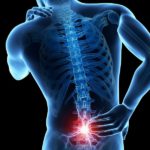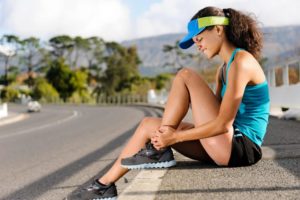 The Honolulu Pain Management Clinic LLC will help you get back to your favorite sports activity.
The Honolulu Pain Management Clinic LLC will help you get back to your favorite sports activity.
 Sports-Related Injuries – Nearly two million people every year suffer sports-related injuries and receive treatment in emergency departments. Fatigue is a contributing factor that results in many sport injuries. As an athlete there are times where you may run on low energy leading to the deterioration in technique or form, which results in a slower reaction time, and finally a loss in stability of muscle joints and an injury. After an occurrence of an injury many athletes display self-esteem issues, athletic identity crises, and high levels of post-traumatic distress, which are linked to avoidant coping skills. Traumatic injuries account for most injuries in many team and nature based sports because of the dynamic and high collision nature of these sports. Collisions with the ground, objects, and other players are common, and unexpected dynamic forces on limbs and joints
Sports-Related Injuries – Nearly two million people every year suffer sports-related injuries and receive treatment in emergency departments. Fatigue is a contributing factor that results in many sport injuries. As an athlete there are times where you may run on low energy leading to the deterioration in technique or form, which results in a slower reaction time, and finally a loss in stability of muscle joints and an injury. After an occurrence of an injury many athletes display self-esteem issues, athletic identity crises, and high levels of post-traumatic distress, which are linked to avoidant coping skills. Traumatic injuries account for most injuries in many team and nature based sports because of the dynamic and high collision nature of these sports. Collisions with the ground, objects, and other players are common, and unexpected dynamic forces on limbs and joints  can cause sports injuries. Prevention helps reduce potential sport injuries and provides several benefits. Some benefits include a healthier athlete, longer duration of participation in the sport, potential for better performance, and reduced medical costs. Primary prevention involves the avoidance of injury. An example is ankle braces being worn as a team, even those with no history of previous ankle injuries. Secondary prevention involves an early diagnosis and treatment should be acquired once an injury has occurred. The goal of obtaining early diagnosis is to ensure that the injury is receiving proper care and recovering correctly, therefore limiting the concern for other medical problems to stem from the initial traumatic event. Lastly, tertiary prevention is solely focused on the rehabilitation to reduce and correct an existing disability resulting from the traumatic event. An example in the case of an athlete who has obtained an ankle injury the rehabilitation would consist of balance exercises to acquire the strength and mobility back as well as wearing an ankle brace, while gradually returning to the sport. [1]
can cause sports injuries. Prevention helps reduce potential sport injuries and provides several benefits. Some benefits include a healthier athlete, longer duration of participation in the sport, potential for better performance, and reduced medical costs. Primary prevention involves the avoidance of injury. An example is ankle braces being worn as a team, even those with no history of previous ankle injuries. Secondary prevention involves an early diagnosis and treatment should be acquired once an injury has occurred. The goal of obtaining early diagnosis is to ensure that the injury is receiving proper care and recovering correctly, therefore limiting the concern for other medical problems to stem from the initial traumatic event. Lastly, tertiary prevention is solely focused on the rehabilitation to reduce and correct an existing disability resulting from the traumatic event. An example in the case of an athlete who has obtained an ankle injury the rehabilitation would consist of balance exercises to acquire the strength and mobility back as well as wearing an ankle brace, while gradually returning to the sport. [1]